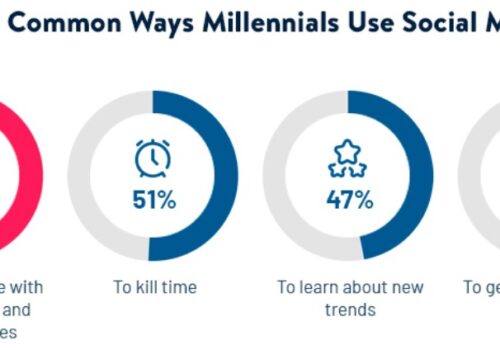Productivity refers to the amount of work that can be accomplished efficiently. It involves finding ways to complete tasks on a to-do list without feeling overwhelmed.
Understanding productivity is crucial in building a successful company or organization. By measuring and evaluating productivity, you can improve the efficiency of your staff or organization.
The data obtained from assessing efficiency in terms of income, tasks, or labor can help you make more informed business decisions.
If you want to increase your performance this year, refer to the following productivity data and facts.
| Statistic | Detail |
|---|---|
| Average Productivity Time | The average office worker is only productive for 2 hours and 23 minutes of the workday. |
| Freelancer Productivity | Freelancers are productive for more than 4 hours per day and work 36 hours a week on average. |
| Desire for Financial Assistance | 80% of clerical workers expressed their desire for financial assistance from their employers. |
| Impact of Employee Engagement | A highly engaged team experiences a 41% decrease in absenteeism, a 59% reduction in turnover, and 28% less internal theft. |
| Profits Increase | Engaged employees boost productivity, leading to a 21% increase in profits. |
| Most Productive Country | Luxembourg is noted as the most productive country. |
| Productivity During Holidays | 65% of employees feel more productive during the holiday season. |
| Miscommunication Cost | Miscommunication and communication obstacles cost the economy $62.4 million each year. |
| CEO Concerns | 86% of CEOs state that inadequate communication is the most important cause of productivity concerns. |
| Time Spent on Emails | A typical interaction worker spends 28% of their time handling emails. |
| Social Technology Impact | Fully exploiting social technology for communication could enhance productivity by 20 to 25%. |
| Social Media at Work | 47% of employees use social media while at work, which can be a distraction. |
| Stress at Work | More than 70% of employees experience stress due to job and financial concerns while at work. |
| Gamification | 89% of workers believe that gamification can boost workplace productivity. |
| Smart Workplace Impact | More than half of Swedish firms polled expect staff productivity to rise as a result of using a smart workplace. |
| Wearable Technology | 49% of respondents said wearable technology would boost office efficiency. |
| Video Conferencing Savings | Video conferencing could save up to 30% on travel expenditures. |
| Flexible Working Arrangements | 64% of business leaders worldwide believe that flexible working arrangements increase productivity. |
| Manager Concerns | 82% of managers worry about decreased productivity among remote employees. |
| Productivity and Profit Margins | High productivity tends to result in operating margins that are 30-50% larger. |
| Technology Impact on Job Satisfaction | 92% of respondents reported that technology designed to make their job easier has a positive impact on their job satisfaction. |
| Increase in Productivity | Wearable technology has been shown to increase productivity by 8.5% and job satisfaction by 3.5%. |
| Employee Engagement Profitability | Teams with high levels of employee engagement are 21% more profitable. |
| Sales Increase | Businesses with highly engaged personnel enjoy a 20% rise in sales. |
| Overall Production Improvement | A 17% improvement in overall production is attributed to engaged personnel. |
| Errors by Disengaged Staff | Disengaged staff made a thousand percent more errors than engaged ones. |
| Loss Due to Disengaged Employees | Businesses in the United States waste up to 550 billion dollars each year due to disengaged employees. |
| Teamwork Difficulty | 46% of people find teamwork to be extremely difficult. |
| Stress Impact on Productivity | 41% of workers experiencing stress have reported a decrease in their productivity. |
| Exercise and Productivity | Replacing just 2.5 hours of work with exercise can significantly boost productivity. |
| Productivity Increase (1979-2023) | From 1979 to 2023, there was a 73.2% increase in productivity. |
| Productivity Software Market Growth | The productivity software market is expected to grow at a CAGR of 14.2% from 2021 to 2028. |
| Most Used Productivity Tool | Microsoft 365 is currently the most widely used productivity tool. |
Crucial Data on Productivity
What is productivity, and how is it defined and evaluated?
Source: Pexels
- A common formula known as a productivity ratio is used to calculate productivity: Productivity = output/input
- Productivity is measured in terms of a ratio of GDP to hours worked in the economy. The yearly percent change in the GDP is used to calculate economic growth.
- The yield (of products or services) each hour is referred to as labor productivity. There are two methods for calculating labor input. It is typically the workforce or the duration of work during a period of time.
- According to a University of California, Irvine study, workers are interrupted every 3 minutes and 5 seconds, and it takes them an average of 23 minutes and 15 seconds to recover from the interruption.
- The average office worker is only productive for two hours and 23 minutes of the workday, according to VoucherCloud research.
- Freelancers are productive for more than 4 hours per day and, on average, work 36 hours a week.
- According to a recent study, 80% of clerical workers expressed their desire for financial assistance from their employers.
- A highly engaged team experiences a 41% decrease in absenteeism, a 59% reduction in turnover, and 28% less internal theft.
- Engaged employees boost productivity, leading to a 21% increase in profits, underscoring the importance of employee engagement strategies.
- Luxembourg is noted as the most productive country, with Scandinavian countries also ranking high due to their focus on work-life balance. Conversely, the Czech Republic and Mexico have lower productivity scores, potentially linked to longer working hours and less focus on work-life balance.
- 65% of employees feel more productive during the holiday season, possibly due to a desire to complete work efficiently to enjoy personal time.
Statistics on Workplace Productivity
Workplace productivity is defined as the amount of “work” completed in a given time period, and it can be assessed in terms of yield per work hour, or it’s per worker.
Technology, employee involvement, and communication can all have a significant impact on workplace productivity.
Statistics on Productivity and Communication
- According to a survey of 400 companies in the United Kingdom and the United States with over 100,000 employees, miscommunication and communication obstacles cost the economy $62.4 million each year.
- According to 86% of CEOs, the most important cause of productivity concerns is inadequate communication.
- A typical interaction worker (salespeople, professors, skilled professionals, managers, and so on) spends 28% of their time handling emails and 20% of their time seeking internal data or seeking assistance from a coworker.
- According to the McKinsey Global Institute, fully exploiting social technology for communication might enhance interaction workers’ average productivity by 20 to 25%.
- Internal utilization of social media for interaction within a firm could save up to 35% of the time spent looking for company information.
- According to a recent UK employee survey, 79% of workers do not believe they are productive for the full eight-hour workday.
- According to recent studies, office workers are productive only for 31% of their workday on average.
- Studies show that 47% of employees use social media while they are at work, which can be a distraction from their work duties.
- It has been observed that more than 70% of employees experience stress due to job and financial concerns while at work.
- Gamification has the potential to boost workplace productivity, according to 89% of workers surveyed.
Data on Productivity and Technology
- Schneider Electric carried out a poll of 125 Swedish firms in 2019 and found that more than half of those polled expected staff productivity to rise as a result of using a smart workplace.
- According to a PricewaterhouseCoopers poll, 49% of respondents said wearable technology would boost office efficiency.
- Video conferencing could save up to 30% on travel expenditures, and 94% of firms who use it on a regular basis report that it boosts productivity.
- According to a survey conducted by Condeco, 64% of business leaders worldwide believe that flexible working arrangements increase productivity.
- According to recent studies, 82% of managers worry about decreased productivity among remote employees.
- Productivity and Profit Margins are closely related. Businesses with high productivity tend to have operating margins that are 30-50% larger than those with low productivity.
- According to a study by Ultimate Software, 92% of respondents reported that technology designed to make their job easier has a positive impact on their job satisfaction.
- Wearable technology has been shown to increase productivity by 8.5% and job satisfaction by 3.5%.
Data on Employee and Productivity Engagement
Source: Pexels
- According to a Gallup survey, teams with high levels of employee engagement are 21% more profitable than those who aren’t.
- Businesses with highly engaged personnel enjoy a 20% rise in sales and a 10% improvement in customer satisfaction ratings.
- A 17% improvement in overall production is attributed to engaged personnel.
- In a 2008 survey of Fortune 100 organizations, it was discovered that disengaged staff made a thousand percent more errors than engaged ones. As per a survey by The Engagement Institute, businesses in the United States waste up to 550 billion dollars each year due to disengaged employees.
- According to a recent survey, 46% of people find teamwork to be extremely difficult.
- Engaged workers boost profits by 21%.
- According to a recent study, 41% of workers experiencing stress have reported a decrease in their productivity.
- Regular exercise has been shown to boost productivity, and replacing just 2.5 hours of work with exercise can have a significant impact.
- From 1979 to 2023, there was a 73.2% increase in productivity.
- According to market research, the productivity software market is expected to grow at a CAGR of 14.2% from 2021 to 2028.
- Microsoft 365 is currently the most widely used productivity tool.
Productivity and Workplace Trends, as well as Data on Remote Work
- The COVID-19 epidemic transformed the way the world conducted business and also how individuals saw their work forever. In 2020, 73% of U.S. employees indicated they were actively looking for or tracking new job prospects, up from 51% in 2017. Because of the high turnover rates, this tendency could have a substantial influence on productivity.
- Virtual meeting fatigue is becoming more common in the workplace, as is the utilization of virtual meetings. In research done by Virtira Consulting, 49% of remote employees said they were exhausted after attending many virtual meetings each day. According to the report, up to 80% of organizations intend to go completely remote or use a hybrid model.
- According to a global poll of CIOs, only 16% of organizations offered remote work before COVID-19; as of March 2021, 70% of those businesses were using remote work. In the same poll, 31% of respondents predicted that working remotely would become the norm in the future.
- Employees who work from home are 52% less likely to take time off due to illness.
- Employees are 24% happier and more productive when working remotely for a day each month.
- According to the CoSo Cloud Survey, 77% of employees have reported experiencing higher productivity while working remotely.
- Tracking productivity is a concern for many remote workers. In fact, 43% of them have mentioned that they would consider leaving their job if their productivity was monitored and tracked.
Facts and Figures on Employee Productivity
Employees are the backbone of any business.
What factors determine work efficiency, and how can a typical employee increase their job productivity?
Source: Pexels
Metrics on Employee Productivity in General
- As per a poll of over 2,000 office employees in the United Kingdom, the typical professional was productive for 2 hours and 53 minutes per day.
- For the top 10% of most productive employees, the typical working time before a break is around 52 minutes.
Metrics on Factors Affecting Low Employee Productivity
- Multitasking is a key barrier that costs the global economy $450 billion per year in lost productivity.
- Another important issue is workplace stress. On any given day, 1 million workers are projected to be absent from work owing to work-related stress. Businesses pay about $602 per employee per year as a result of this. Workers who arrive at work stressed, on the other hand, do not perform at their best. According to the International Foundation of Employee Benefit Plans, these workers are responsible for $150 billion in annual productivity losses.
- As per a YouGov poll of 1,150 persons in the United States, 30% believed that they might be more productive at work if they didn’t have access to their cell phones. In the very same survey, 42% of respondents agreed that they spend too long on their smartphones.
- The most common obstacle impeding productivity ever since the COVID-19 outbreak, according to a survey of nearly 2,000 employees worldwide, has been difficulties concentrating, which has affected 28.3% of those polled.
- Employee obesity and chronic health issues cost over $150 billion annually.
- Social media usage at work costs businesses $28 billion annually.
- Businesses lose around 24 billion hours every year due to unproductive meetings.
Data on Factors that Improve Employee Productivity
- Although recognition increases productivity by 14%, just 20% of employees feel appreciated at work.
- A corporate wellness program can boost productivity. According to 61% of workers polled, the health benefits gained from a business wellness program enhanced not only their output but also their overall job happiness.
- The productivity of call center staff who were requested to work at home for nine months increased by 13%, according to Harvard research. The ability to work from home increased not only productivity but also happiness and performance. Workers took fewer breaks, took fewer sick days, became more timely, and improved work minutes by 9%, resulting in greater bonuses for many workers and an overall better employee experience. Happy workers are more productive.
- Employee happiness boosts productivity by 12%.
Productivity by Nations
Here are the top productive nations. As per the Organization for Economic Co-operation and Development, the top 10 OECD nations by GDP per capita in USD from 2020 are listed below (OECD).
- Luxembourg ($118.73)
- Ireland ($95.51)
- Switzerland ($71.71)
- Norway ($63.29)
- United States of America ($63.29)
- Denmark ($60.56)
- Netherlands ($59.33)
- Austria ($55.65)
- Iceland ($55.21)
- Sweden ($54.91)
Statistics Face Productivity Challenges
Employees may be responsible for completing tasks, but businesses must also be held accountable. What are a few of the most serious problems that a company encounters when it concerns employee productivity?
- According to a survey of 182 senior managers from a variety of businesses done by the University of North Carolina, 71% of respondents said meetings were a waste of time. Meetings also prevented 65% of respondents from doing their own work.
- Another factor that affects productivity is poor management. When confronted with a terrible employer, 48% of employees claimed to lower their job effort on purpose, and 63% acknowledged squandering time on the job to avoid their supervisor.
- Staff turnover is a major productivity drain that costs both money and time. Millennial turnover costs the United States $30.5 billion every year.
- High turnover is exacerbated by a bad environment. When confronted with a poisonous workplace culture, 78% of employees said they are more inclined to look for another job.
Statistics on Productivity Challenges and Solutions
Companies that want to boost productivity must start from the ground up. Focusing on high-quality leadership and cultivating a healthy workplace culture will attract the happy, engaged employees required for maximum productivity.
- Employers with a favorable work environment are sought by job seekers. In fact, 46% of respondents claimed that corporate culture is a key determinant in whether or not they consider a job offer.
- Team leadership is the most important component of organizational culture. Highly trained management generates a 27% rise in earnings per employee.
Other Productivity Facts To Consider
When calculating labor productivity, a variety of criteria are taken into account. Here are some more fascinating facts and figures to consider.
- It requires 23 minutes to get back on track after being distracted at work.
- Businesses use gamification to encourage employees and positively impact employee performance and productivity by adding game-like dynamics into the work environment. In a 2019 survey, 89% of employees said their workplaces would be more efficient if they included more game-like aspects.
- It is anticipated that between 2017 to 2021, higher productivity as a consequence of the use of AI Technology in client management activities will generate a sum of 121 billion US dollars.
- Fatigued employees are less effective than those who are well-rested, costing American businesses $63 billion each year.
- As per the United States Bureau of Labor Statistics, multifactor productivity (formerly known as total factor productivity) fell in 76% of major industries in 2020, with the arts, leisure, and recreation industries seeing the biggest drops.
- A well-designed, comfortable work environment can boost productivity by up to 20%. Natural light, ergonomic furniture, and a clean, organized space contribute to better focus and efficiency.
- Lack of sleep can significantly reduce cognitive performance, equivalent to being legally drunk. Adults need 7-9 hours of sleep per night for optimal functioning.
- Regular exercise boosts brain function, improves mood, and increases energy levels, all of which contribute to higher productivity.
- Mental health issues, such as anxiety and depression, can decrease productivity by over 30%. Supporting mental health in the workplace is crucial.
- Prioritizing tasks and focusing on one task at a time instead of multitasking can lead to more efficient work output. Multitasking can reduce productivity by up to 40%.
- Positive social interactions at work can boost productivity. Employees with strong work relationships are more engaged and have higher job satisfaction.
FAQs
📈 Why is productivity important?
Productivity is key because it helps us do our work better and faster. This means we can finish more tasks without working extra hours, giving us more time for fun stuff.
🤔 How does technology affect productivity?
Tech tools can make a big difference! They help us organize our work, keep track of what we need to do, and even do some tasks for us. This means we can do our jobs more quickly and easily.
💡 Can setting goals improve productivity?
Definitely! Setting clear goals gives us something to aim for and helps keep us motivated. It's like having a map that guides us to where we want to go with our work.
🌍 How do productivity levels differ around the world?
Productivity levels vary widely, with countries that invest in education, technology, and infrastructure typically seeing higher productivity rates. Economies with access to the latest technologies and skilled workforces tend to outperform others.
👩💻 What impact has remote work had on productivity?
Surprisingly, many reports indicate that remote work has boosted productivity for a lot of businesses. Employees often report fewer distractions and a better work-life balance, leading to more efficient workdays.
🔄 What role does multitasking play in productivity?
While multitasking might seem efficient, research consistently shows it can actually decrease productivity. Focusing on one task at a time is generally more effective for output and quality of work.
Quick Links:
- Pinterest Statistics
- Amazing AR Statistics
- Significant Reddit Statistics
- Latest Online Learning Statistics
- Most Important LinkedIn Stats
- Internet Statistics & Facts
- Browser Statistics
Conclusion: Productivity Statistics 2025
As one delves into productivity statistics, it’s important to note that being efficient, and not just being busy, is the key to success. With the advent of technology and smart work methods, both individuals and companies are able to accomplish more.
The rise of remote work has also demonstrated that flexibility can greatly enhance productivity. However, there are still obstacles to overcome, such as distractions and the need for the right tools.
Moving forward, it is important to maintain a balance between hard work and personal well-being. By focusing on smart strategies and staying up to date with technology, one can work better.
The biggest lesson here is that productivity flourishes when one combines innovation with taking good care of oneself.
Sources: Bryan, Condecosoftware, Cigitalintheround, Forbes, Gallup, Globenewswire, Goremotely








